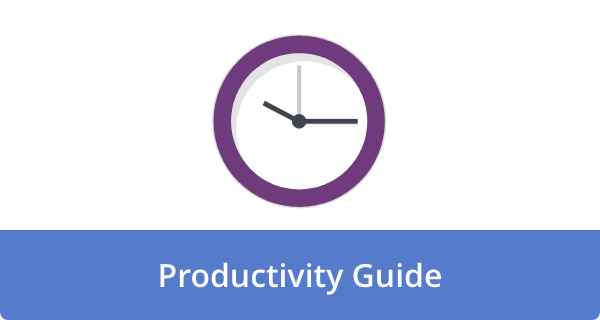

You probably have a Calendar full of helpful meetings that quietly kill the exact work you are hired to work on. The fix is not a new app. It is a daily operating system that divides your day into four deliberate blocks, so creative work gets first claim on your best energy, called “Maker time.”
Below is the pattern many top experts keep returning to, and how you can implement it without becoming a Calendar tyrant.
1. Protect block one like a standing client meeting
Schedule your most challenging work first and treat it like revenue, because this creative time is what actually turns into revenue for you. Add a daily 2- to 3-hour event to your calendar that repeats, auto-declines invites, and starts at your peak energy time. If you manage people across time zones, add a note that you are reachable for real emergencies. The logic is simple: cause and effect. Early, high-quality attention multiplies output, while fragmented mornings create rework. One product lead I coached moved a weekly standup out of 9 a.m.; shipped time to first decision dropped from 3 days to 36 hours because designs were ready sooner.
2. Corral meetings into an actual manager block
Hold a daily 60- to 120-minute window for 1:1s, standups, interviews, and vendor calls. Stack similar formats together so your brain stays in “talk and decide” mode. You reduce context-switching tax and give peers a reliable way to find you. Suppose you must meet outside the window, trade time with yourself by shrinking the manager block for the next day. That honesty keeps the schedule credible and prevents a slow creep that swallows maker time.
3. Add a second, smaller maker block for momentum
The afternoon maker block is where you finish what you started in the morning or push a fresh thread forward by 60 to 120 minutes. It is short on purpose. Willpower dips later in the day, so define a tight, winnable task before you go to lunch: two slides, one query, three code tests, a 500-word draft. Small wins compound. I have seen teams track a simple metric here: 3 concrete “moves” per person per day across the two maker blocks. Weeks later, backlogs shrink even with the same headcount.
4. Land the plane with an admin block that resets tomorrow
End with a 30 to 60 minute cleanup: inbox zero, sprint notes, calendar edits, and a 3-item tomorrow plan. This is not busywork. Maintenance preserves your runway. When you close loops today, your morning maker block starts cold and clean. If you support customers, set aside 10 minutes to scan for tickets that could surprise you overnight. Alternate path if you share a household: split this block into two micro sessions so you can do a school pickup without sacrificing closure.
We created an example 4-block day
| Block | Purpose | Length | Ownership |
|---|---|---|---|
| 1 | Maker block 1: hardest creative work | 120–180 min | You only |
| 2 | Manager block: meetings, messages, decisions | 60–120 min | Team-facing |
| 3 | Maker block 2: build, write, analyze | 60–120 min | You only |
| 4 | Admin block: planning, inbox zero, errands | 30–60 min | You or EA |
How to roll it out without drama
Do a 2-week pilot. Announce your blocks to your team in a few sentences and add a Slack status during maker time. Route urgent needs to a single channel with a clear subject line convention. Give your closest collaborators the right to break the glass. After the pilot, adjust lengths by 15-minute increments rather than rewriting the whole day. Minor tweaks preserve the mental model and make adoption stick.
Guardrails that keep the system honest
Hold short weekly office hours so stakeholders know there is a safe place for unscripted asks. Use meeting buffers so a 30-minute call ends at 25 and a 45-minute call ends at 40. Decline agenda-less invites with a polite template. Track one number: uninterrupted minutes inside maker blocks. If it falls below 70% for a week, fix the leak before adding work.
Make it team-wide without forcing uniformity
Leaders should publish their default 4-block template and ask directs to publish theirs as well. The shapes can differ. A support manager might invert blocks so the longest maker time sits when ticket volume is lowest. A designer might run a 180-minute morning maker and keep the afternoon block flexible during research weeks. The system is principles first, preferences second.
Meeting triage that respects both makers and managers
Not all meetings deserve scarce block two space. Triage with three quick checks: is there a pre-read, a decision owner, and a next step due that day? If any answer is no, move it to async. If all answers are yes but the topic is hairy, convert the meeting into a time-boxed workshop that lives at the front of block 2 when attention is highest. You will cut recurring zombies and give important sessions a fighting chance.
When your calendar is not entirely yours
Customer-facing roles, IT, and HR often live in reactive flows. Use a hybrid: protect at least one 90-minute morning maker block four days a week, then slice shorter 20-minute focus sprints between tickets. It is imperfect, yet the math still works. 4 mornings at 90 minutes each equal 6 hours of deep work. That is enough to move roadmaps that would otherwise stall.
What about executives and parents
Executives can treat block two as two smaller manager blocks split by a walking 1:1. Parents and caregivers can shift the longest maker block to post-dropoff or late evening, then keep the second maker block tiny but sacred. The point is not rigidity. It is a common language that lets you defend your best hours without apology.
A friendly script to reset expectations
If you are worried about saying no, try this simple talk track.
• “I work in four daily blocks so I can do my best work for the team.”
• “Happy to meet in my manager’s window today between 1 and 3.”
• “If it is urgent, text me and I will step out.”
• “If async works, send notes and I will respond after my morning block.”
Use it three times, and people adapt. You will too.
A worked example from a hybrid product team
We piloted the 4-block day for a team of 12. Mornings ran a 150-minute maker block, then a 90-minute manager block, a 75-minute maker block, and a 45-minute admin block. After 30 days, the cycle time for medium tasks fell from 9.2 days to 6.1 days. The team shipped one extra backlog item per person every 2 weeks with no added headcount. The variable that moved most was uninterrupted minutes, up from 52% to 81%. The schedule did not create talent. It removed friction.
Closing
A Calendar is not neutral. It either feeds your best work or starves it. The 4-block day is a simple, team-friendly way to give your craft first claim on your attention while keeping the business humming. Start with a 2-week pilot, protect your first block, and measure uninterrupted minutes. You will feel the change before you see it. Then the results show up in the work.
Featured Image: Stas Knop; Pexels











Angela Ruth
My name is Angela Ruth. I aim to help you learn how Calendar can help you manage your time, boost your productivity, and spend your days working on things that matter, both personally and professionally. Here's to improving all your calendars and becoming the person you are destined to become!